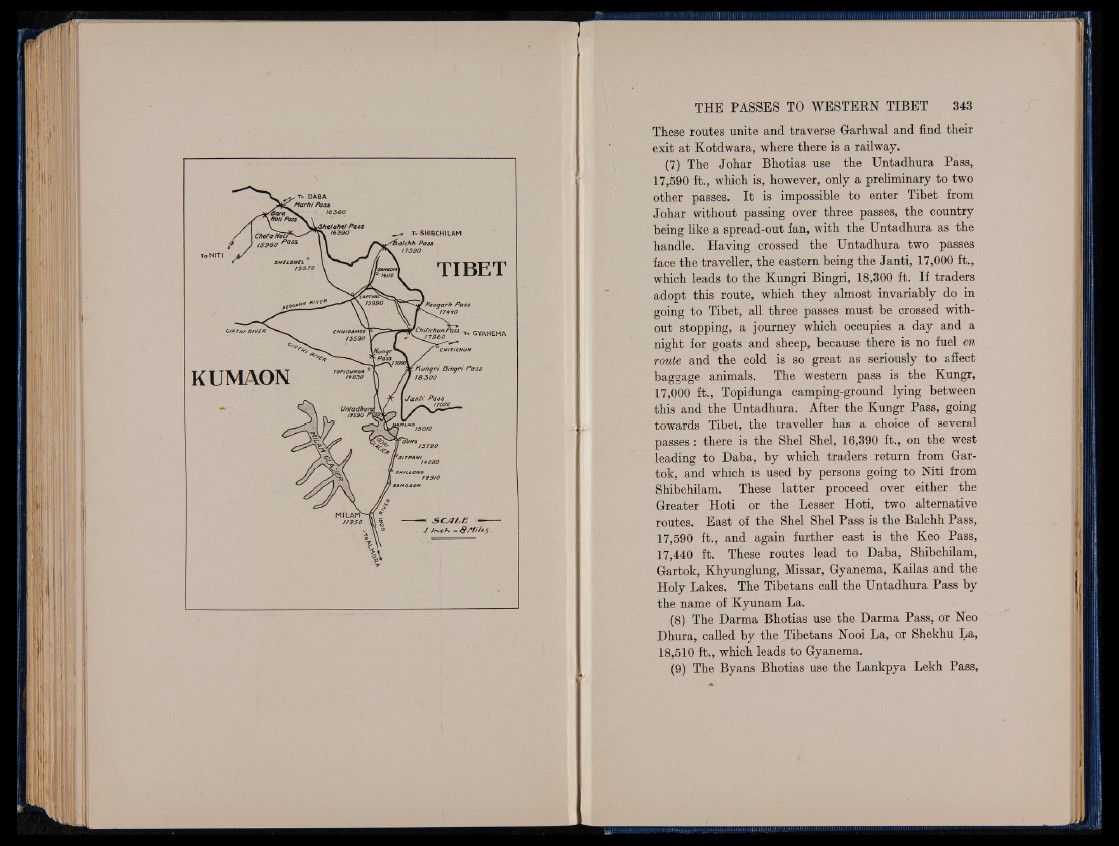
These routes unite and traverse Garhwal and find their
exit at Kotdwara, where there is a railway.
(7) The Johar Bhotias use the Untadhura Pass,
17.590 ft., which is, however, only a preliminary to two
other passes. It is impossible to enter Tibet from
Johar without passing over three passes, the country
being like a spread-out fan, with the Untadhura as the
handle. Having crossed the Untadhura two passes
face the traveller, the eastern being the Janti, 17,000 ft.,
which leads to the Kungri Bingri, 18,300 ft. If traders
adopt this route, which they almost invariably do in
going to Tibet, all three passes must be crossed without
stopping, a journey which occupies a day and a
night for goats and sheep, because there is no fuel en
route and the cold is so great as seriously to a fleet
baggage animals. The western pass is the Kungr,
17,000 ft., Topidunga camping-ground lying between
this and the Untadhura. After the Kungr Pass, going
towards Tibet, the traveller has a choice of several
passes: there is the Shel Shel, 16,390 ft., on the west
leading to Daba, by which traders return from Gar-
tok, and which is used by persons going to Niti from
Shibchilam. These latter proceed over either the
Greater Hoti or the Lesser Hoti, two alternative
routes. East of the Shel Shel Pass is the Balchh Pass,
17.590 ft., and again further east is the Keo Pass,
17,440 ft. These routes lead to Daba, Shibchilam,
Gartok, Khyunglung, Missar, Gyanema, Kailas and the
Holy Lakes. The Tibetans call the Untadhura Pass by
the name of Kyunam La.
(8) The Darma Bhotias use the Darma Pass, or Keo
Dhura, called by the Tibetans Nooi La, or Shekhu La,
18,510 ft., which leads to Gyanema.
(9) The Byans Bhotias use the Lankpya Lekh Pass,